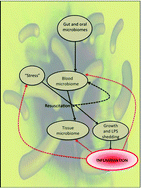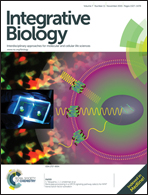On the translocation of bacteria and their lipopolysaccharides between blood and peripheral locations in chronic, inflammatory diseases: the central roles of LPS and LPS-induced cell death†
Abstract
We have recently highlighted (and added to) the considerable evidence that blood can contain dormant bacteria. By definition, such bacteria may be resuscitated (and thus proliferate). This may occur under conditions that lead to or exacerbate chronic, inflammatory diseases that are normally considered to lack a microbial component. Bacterial cell wall components, such as the endotoxin lipopolysaccharide (LPS) of Gram-negative strains, are well known as potent inflammatory agents, but should normally be cleared. Thus, their continuing production and replenishment from dormant bacterial reservoirs provides an easy explanation for the continuing, low-grade inflammation (and inflammatory cytokine production) that is characteristic of many such diseases. Although experimental conditions and determinants have varied considerably between investigators, we summarise the evidence that in a great many circumstances LPS can play a central role in all of these processes, including in particular cell death processes that permit translocation between the gut, blood and other tissues. Such localised cell death processes might also contribute strongly to the specific diseases of interest. The bacterial requirement for free iron explains the strong co-existence in these diseases of iron dysregulation, LPS production, and inflammation. Overall this analysis provides an integrative picture, with significant predictive power, that is able to link these processes via the centrality of a dormant blood microbiome that can resuscitate and shed cell wall components.


 Please wait while we load your content...
Please wait while we load your content...